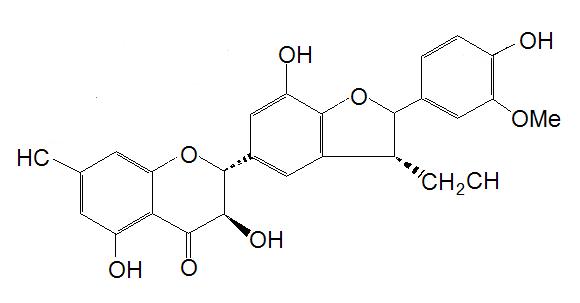Milk thistle (Silybum marianum) is plant revered by ancient Chinese medicine for its effectiveness as a liver tonic. Based on these claims, the herb milk thistle has been extensively researched with regard possible hepataprotective effects. Animal experiments show the ability of milk thistle to regenerate experimentally damaged livers and analysis of early studies in the 1970s has resulted in the identification of a number of flavonoid-derived compounds that may possess the ability to protect hepatocytes. Silimarin is a collective name for a group of flavanolignin isomers in milk thistle. These isomer are most likely the active hepatoprotective constituent of milk thistle, and have been shown to biologically active. The isomers identified to date in milk thistle include silydianin, silybin and silychristin. However, it is unknown as to which of the isomers is the most biologically active, but there is likely a synergistic effect between them in vivo.
The flavanolignins in milk thistle are produced by bonding a coniferyl alcohol to the polyphenolic ring structure of a flavonoid (figure 1). Coniferyl alcohol is a widely distributed plant compound and is used in many synthetic reactions. This alteration to the flavonoid molecule appears to alter the physiological effects of the flavonoid from that of a general protective antioxidant and gene regulator, to a more specific hepatic role. The mechanisms of action of silimarin is unknown, but research suggests that increased protein synthesis is a likely explanation for the hepatoprotective effects. The absorption of silymarin is around 50% and only low amounts (5-7%) are found in the periphery. Silymarin is removed from plasma to the bile, where it enters the enterohepatic circulation. This allows the active isomers to concentrate in the hepatocytes, a physiological phenomenon that is seen in some other compounds such as the Amanita mushroom poison.
 Figure 1. The chemical structure of silychristin, one of the flavanolignins in milk thistle that may give it hepatoprotective effects.
Figure 1. The chemical structure of silychristin, one of the flavanolignins in milk thistle that may give it hepatoprotective effects.
RdB
Hobbs, C. 1992. Milk thistle: the liver herb. Botanica Press (second edition), California.
